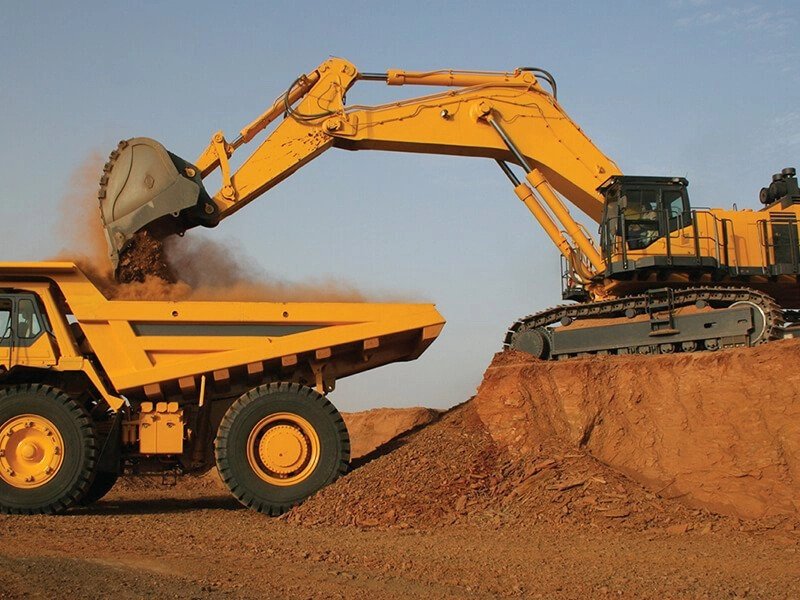
In the heavy equipment industry, the seamless and enhanced performance of equipment is based on the right types of lubricant used in them. The use of inappropriate lubricant may not only deteriorate the equipment’s health but also have a harmful impact on the environment. Hence, all the environmental regulators urge to use of eco-friendly lubricants that are safe to use in the equipment and have no adverse effects on the environment. This urge is also increasing the massive demand for the EALs from manufacturers and construction contractors.
What Are Environmentally Acceptable Lubricants (EALs)?
EAL is not something unusual. You need to understand its basics any lubricant that is least harmful to the environment is an environmentally acceptable lubricant. In this scenario, you may take this concept as the EALs are the specific lubricants that follow all the ecological guidelines and have negative or no impact on the aquatic as well as terrestrial environment. Environmental Protection Agency (EPA) has issued some of the regulations that show the integrity of the EALs. You need to understand and follow those guidelines before choosing one for your equipment. These lubricants are specifically formulated to have the least possible impact on the environment by integrating some of the biodegradable, and delicate chemicals in it.
Characteristics of EALs
In order to understand how EALs are best for the environment, you need to understand its characteristics first. EALs have a number of distinguishing characteristics that make them the preferred choice of equipment operators:
- They are biodegradable which means they are created to organically decompose in the environment, minimizing their environmental impact.
- They are safe for use in water-intensive applications since they are non-toxic and do not affect aquatic life.
- EALs provide performance abilities comparable to those of conventional lubricants, guaranteeing that heavy construction machinery runs as efficiently as possible.
- EALs follow strict environmental laws, such as the Vessel General Permit issued by the Environmental Protection Agency (EPA).
Specific Standard of EALs
Both the European Union’s Ecolabel (EEL) requirements and the U.S. Environmental Protection Agency (EPA) rules have set some standard that EALs needs to follow in order to be the best lubricants. These requirements cover these essential areas:
- To prevent harm to the sensitive aquatic ecosystems in our waterways, EALs must have low toxicity to aquatic creatures.
- In order to protect the ecological balance, certain compounds that are hazardous to the environment are prohibited in EALs.
- EALs must be biodegradable, which means they can decompose naturally over time, and they should not accumulate inside organisms to reduce the chance of injury.
- Reliable packaging and container requirements reduce waste and have a positive impact on the environment.
- To guarantee that EALs fulfil their duties correctly, they must meet certain performance criteria.
- Rules for how to safely dispose of EALs are available by EPA in order to protect the environment.
Advantages of EALs in Heavy Equipment
The advantages of incorporating EALs with used construction equipment go far beyond simple environmental conservation.
-
Environmental Benefits
As EALs are less damaging to aquatic environments, they greatly lower the danger of water pollution. This is especially important when construction sites are close to wetlands or water bodies. Whereas, using EALs guarantees adherence to environmental laws and potentially economical construction enterprises from costly fines and legal issues.
2- Operational Advantages
EALs effectively lubricate heavy construction equipment, reducing wear and tear. As a result, the lifespan of these expensive assets will expand. You need to remember that EALs never cut corners when it comes to performance. Under difficult circumstances, they continue to have lubricated characteristics, ensuring excellent equipment function for a longer time. Since EALs are non-toxic, construction workers can operate in a more secure atmosphere. EALs pose less of a threat to human health than conventional lubricants in the case of a spill.
3- Cost Reduction
Despite having a somewhat higher upfront cost, EALs are a cost-effective option because they require less maintenance and equipment replacement in the long run. You will find that EALs are less expensive to clean up in the event of spills.
Uses of EALs in Heavy Construction
EALs are adaptable and can be useful in a variety of heavy construction equipment, including:
- EALs can be suitable fit in hydraulic systems of large machinery to ensure environmental compliance while providing effective lubrication.
- Gearboxes and transmissions are frequently used in heavy construction equipment, where EALs can lessen wear and friction.
- EAL greases provide excellent lubrication and protection for a variety of construction equipment components.
- EALs are especially important in offshore buildings because of the strict environmental rules and the potentially disastrous effects of spills.
Conclusion
For the heavy construction industry, environmentally responsible lubricants present a viable solution that strikes a balance between the requirement for effective machinery and environmental responsibility. Adopting EALs will become more essential as rules change in order to maintain compliance and competitiveness in the construction industry. Adopting EALs benefits both the industry and the environment by protecting our natural environment while also ensuring the long-term reliability and peak efficiency of heavy construction equipment.



